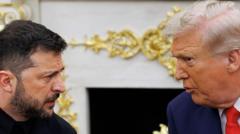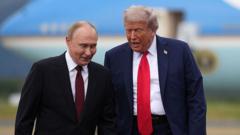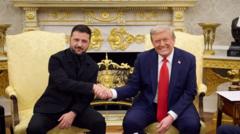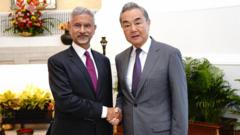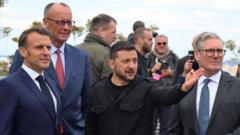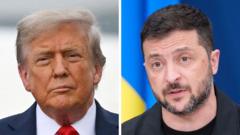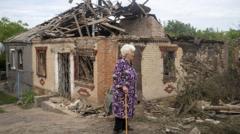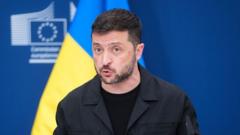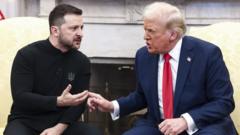The Oval Office map illustrating Russian-occupied regions shapes Trump's perspective on Ukraine, emphasizing territorial compromises, while Zelensky counters with Ukrainian realities and the quest for reclaiming lost land.**
Trump and Zelensky's Mapping of Reality: A Strategic Dialogue on Ukraine**
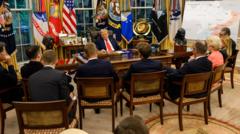
Trump and Zelensky's Mapping of Reality: A Strategic Dialogue on Ukraine**
The contrasting views on territory between President Trump and President Zelensky highlight the complexities of the ongoing Ukraine war discussions.**
In a recent meeting in the Oval Office, a large map highlighting territories under Russian occupation made its presence felt during President Donald Trump's discussions with Ukrainian President Volodymyr Zelensky. The visual representation, including marked areas in red, aimed to emphasize the weight of the ongoing conflict in Ukraine, wherein Russia currently holds about 20% of the nation's territory.
"You've all seen the map," Trump remarked in a Fox News interview, pointing to the reality of the land seized by Russia. The message delivered from the White House was clear: the territories occupied by Russia are significant, hinting at the need for potential negotiations or territorial compromises with Russian President Vladimir Putin, a sentiment echoed by some as "land swaps."
Zelensky, however, illuminated the complexities behind territorial claims, presenting his own map during discussions with Trump. He emphasized the importance of understanding who controls what in Ukraine based on actual ground realities. Despite his efforts to clarify misconceptions regarding territorial control, Trump's stance remained: the power of Russian forces is substantial and they have not halted their advances.
Amid rising discussions surrounding compromises about regions such as Donbas, which has become almost entirely Russian-controlled (79% presently), historical significance and economic output cannot be overlooked. Before the war started in 2014, Donbas accounted for a significant portion of Ukraine's economic composition. Reports, including those from Trump, suggest Putin desires full control of the Donbas as part of any peace negotiations.
Zelensky's confrontation with the territory statistics indicated that while Russian forces occupy substantial areas like Luhansk (99%) and Donetsk (76%), Ukrainian resilience remains palpable in urban centers such as Kramatorsk, where nearly a quarter of a million civilians reside.
Despite an estimated increase in Russian territorial control in the past few months, experts suggest that completing full regional conquest would require considerable time. Defensive strategies and manpower shortages have hindered Ukrainian forces, yet they retain control over key areas and are determined to protect their state.
Defense analysts note that while Russia makes tactical gains, the larger offensive has not significantly altered frontline positions since the early days of conflict. Incidents of Ukrainian repulsion against Russian advances are reported, emphasizing Ukraine's tenacity in safeguarding its land.
As the conversation unfolded, Zelensky expressed gratitude for the information presented on the map, indicating a blend of acknowledgment and resolve as he seeks avenues to reclaim occupied territories. The juxtaposition of their views underscores the intricate and layered challenges faced in navigating the realities of the conflict, embodying the divergent paths and strategies of both nations in a high-stakes crisis.

